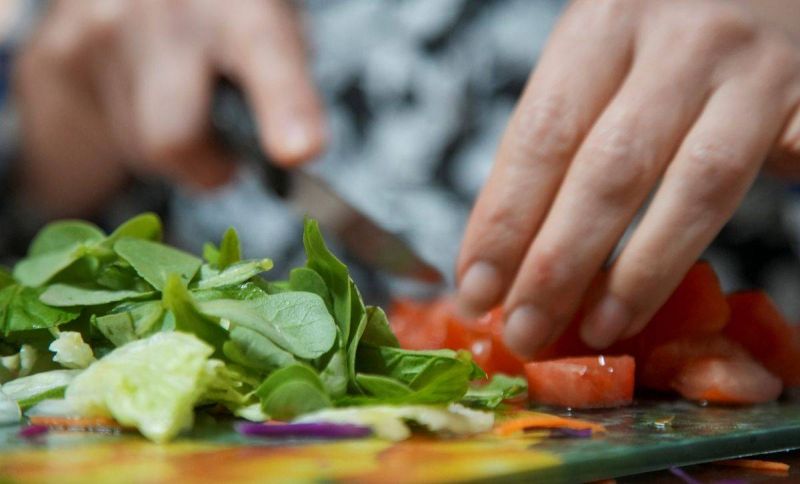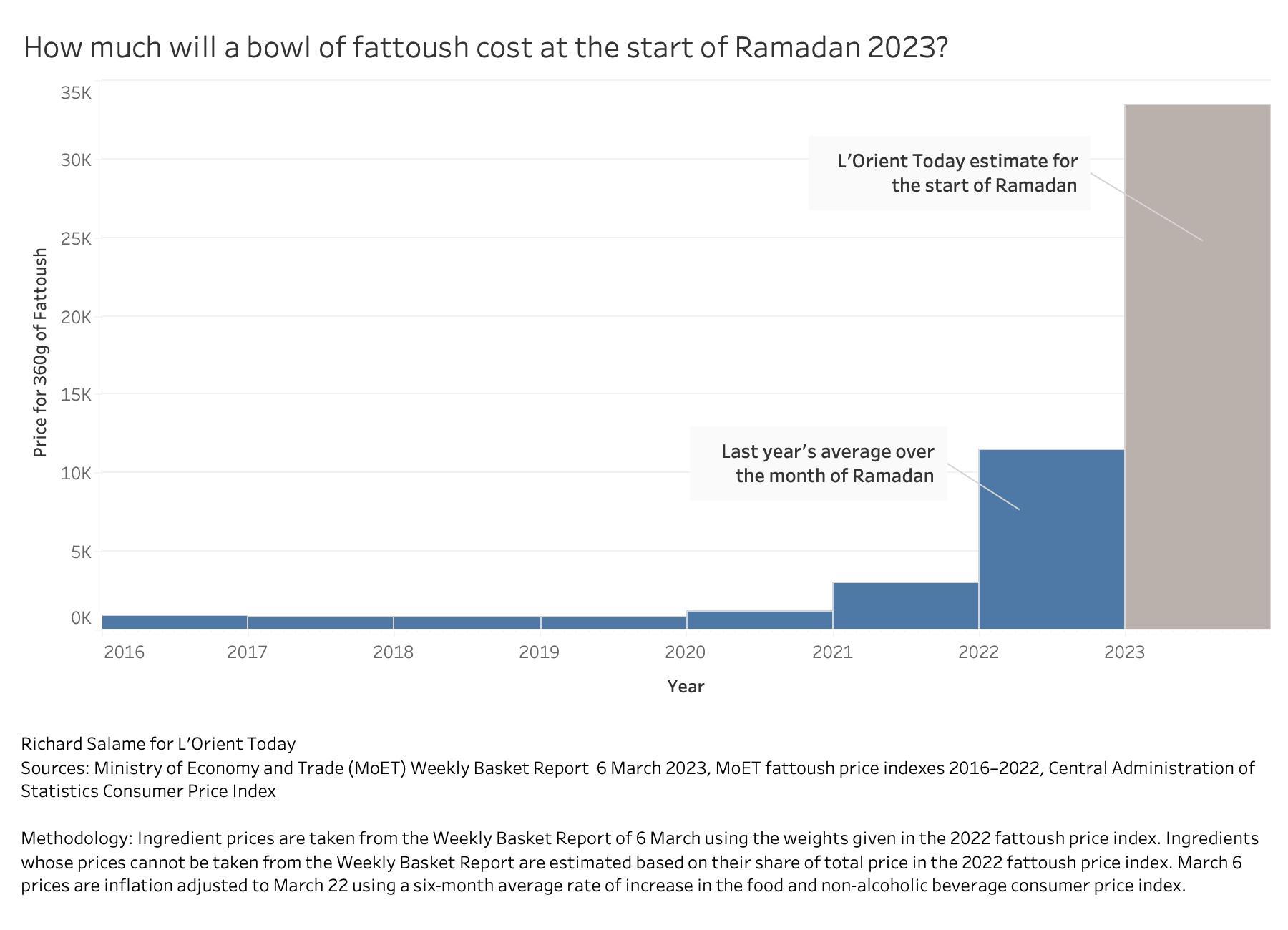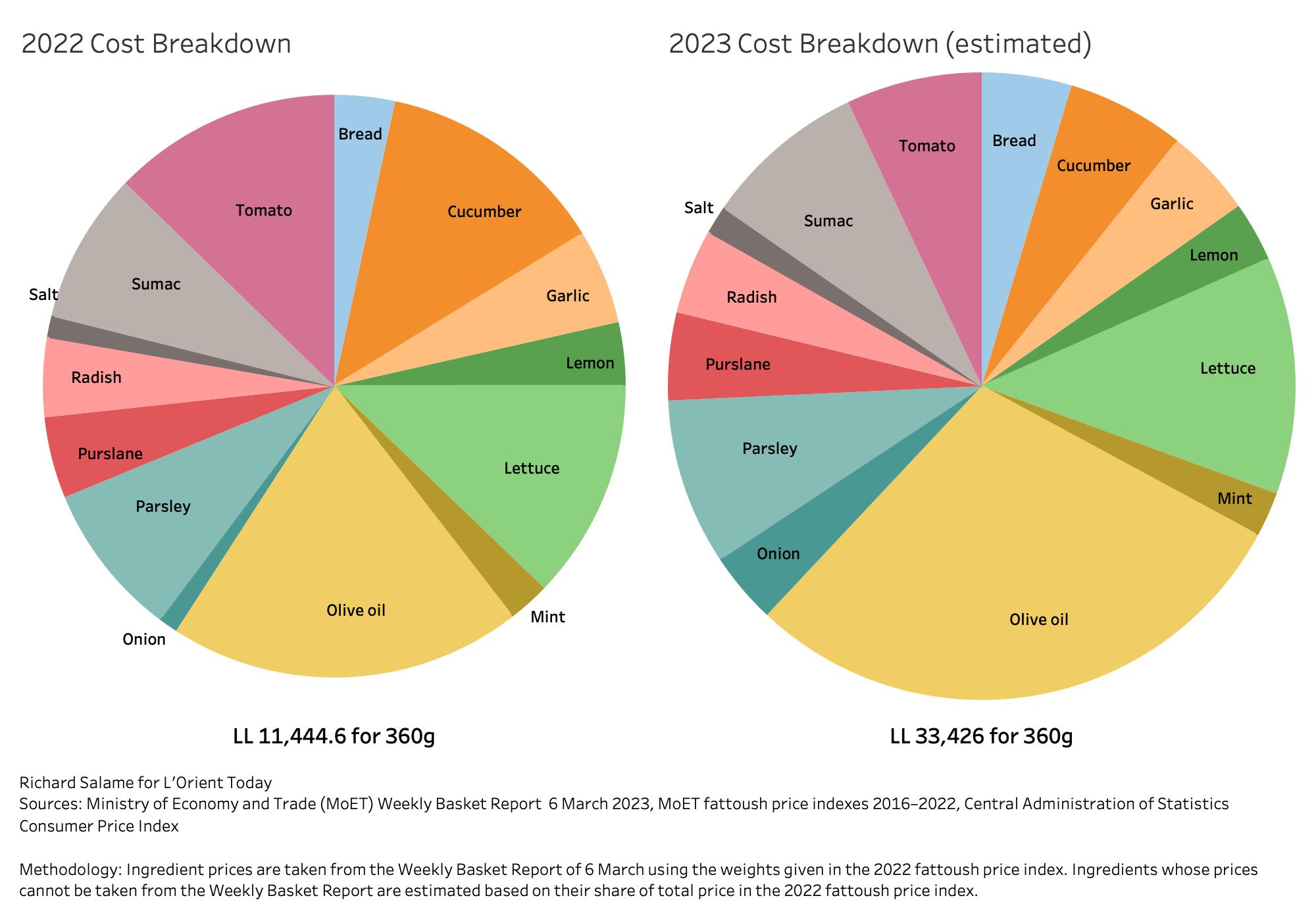
Hala Sheikh prepares Fattoush, a popular salad, at her house in Beirut, Lebanon on April 13, 2021. (Credit: Issam Abdallah/Reuters)
Based on the most recently available data, L’Orient Today predicts that a bowl of fattoush will likely cost LL33,500 at the start of Ramadan, or triple its average price from last Ramadan.
For more than 10 years, the Ministry of Economy and Trade (MoET) has tracked the price of Lebanon’s favorite salad during the month of Ramadan, when millions of Lebanese gather for nightly iftar feasts.
Ramadan is typically said to be a season of price increases, given the higher consumer demand. The price of fattoush is an intuitive way to track food prices, given its 14 diverse ingredients including vegetables, spices, olive oil, and bread; it is also “the main dish of Ramadan,” in the MoET’s words.

In recent years, the MoET’s official fattoush price index was released three to nine days after the start of Ramadan. As we wait for its official release, L’Orient Today estimated the cost of fattoush at the start of the holy month.
L’Orient Today predicts that a 360g bowl of fattoush will likely cost LL33,500, or triple its average price from last year and more than 11 times its average price in 2021.
This price is also roughly 40 times more expensive than the same size bowl of fattoush in 2019, calculated on a lira basis.
This year, a family of five eating fattoush each night of Ramadan will likely spend over LL5 million on the dish—more if the salad’s price rises as the lira depreciates and inflation continues its march.

As far as the salad’s ingredients go, olive oil is likely the biggest driver of cost. Last year, the 15 grams of olive oil required in MoET’s fattoush recipe cost LL2,344. This year the same amount will likely cost upwards of LL9,000, based on March grocery store prices tracked by MoET.
The economic crisis will continue to cast a shadow over Ramadan celebrations as dishes that many Lebanese once took for granted become more difficult to afford.
L’Orient Today reached this price estimate using the ingredient prices given in the MoET’s Weekly Basket Report of March 6 and the ingredient amounts listed in the 2022 fattoush price index. Ingredients whose prices couldn’t be estimated from the basket report — like those that are not given specified volumes or weights in the basket report — are estimated using their proportion of the total price in 2022. March 6 prices are adjusted to account for 16 days of inflation through the start of Ramadan, based on the average rate of food and non-alcoholic beverage inflation over the last six months.